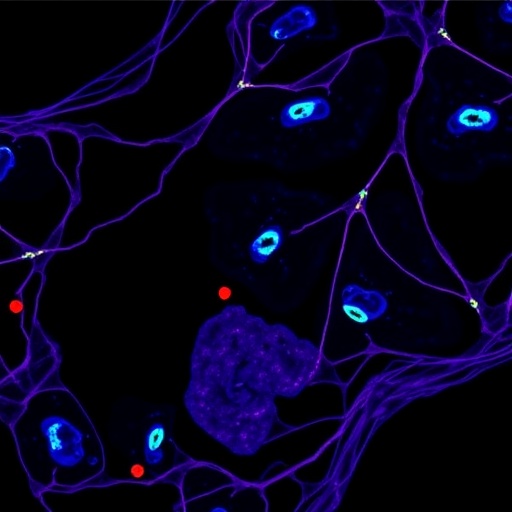A study finds evidence of pre-cancerous lung tumours in mice using blood-based tests
New research led by scientists at the Medical Research Council (MRC) Toxicology Unit suggests that by analysing levels of DNA in the blood, the early detection of lung cancer could be improved.
The study, published in the journal Disease Models and Mechanisms, found that in preliminary tests using mice, a blood test could measure the circulating levels of DNA in the blood which cancer cells shed as they grow and multiply, and could even predict the presence of tumours in the lungs before they became cancerous.
Lung cancer is the number one cause of cancer-related death around the world, partly due to the difficulties in detecting the disease at an early stage. By the time lung cancer is diagnosed, it has often spread to other parts of the body making it much more difficult to treat, which is why improved diagnosis at an earlier stage is key to beating the disease.
The scientists at the MRC Toxicology Unit, part of the University of Cambridge, alongside scientists at the University of Leicester, used mice with a mutation in a gene called KRAS to model the pre-cancerous stages of lung cancer. The researchers took regular computed tomography (CT) scans to monitor the development of small pre-cancerous lung tumours in the mice. To determine whether circulating DNA could be used to detect the tumours before they became malignant, blood samples were taken along with the CT scans at different time intervals.
The team found that the mice developing cancerous lung tumours had higher levels of circulating DNA compared with healthy mice, and that the levels of DNA released by the cancerous tumours into the blood of the mice correlated with the size of the tumours seen on the CT scans. The circulating DNA was then analysed for the presence of the precise KRAS mutation that caused the tumours to develop. The researchers found that, significantly, in later stages of tumour development where tumours were still pre-cancerous, the KRAS mutation could still be detected in circulating DNA.
“This observation is exciting because it suggests that tumour-causing mutations may be detectable in circulating DNA from patients with early-stage cancers or with pre-cancerous tumours”, says Dr Miguel Martins, a programme leader at the MRC Toxicology Unit and lead author of the study.
Regarding the importance of follow-up studies, he believes that “Similar studies should now be conducted using mice bearing pre-cancerous lesions in other tissues. This will give us a better idea of whether circulating DNA has potential use for early cancer detection in patients.”
Dr Mariana Delfino-Machin, Programme Manager for Cancer at the MRC, which funded the research, added “This is a really promising piece of early-stage research. Lung cancer is incredibly difficult to diagnose at the stage where it can be successfully treated, leading to a poor rate of survival. Developing early detection strategies to improve survival rates is key, and if this can be achieved using only a blood sample it would greatly benefit patients and the NHS. We look forward to the results of the next stages of this research.”
###
Media Contact
Hermione Lawson
[email protected]
44-207-395-2345




